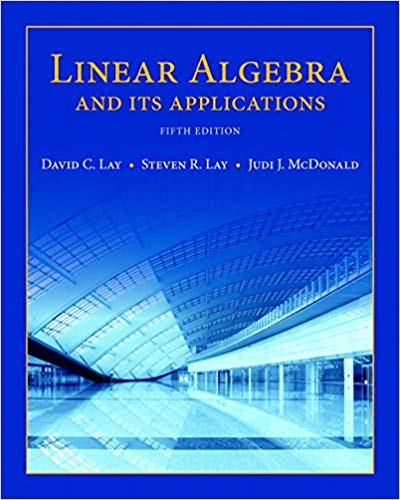
Linear Algebra and Its Applications, 5th Edition
Authors: David C. Lay, Steven R. Lay, Judi J. McDonald
ISBN-13: 978-0321982384
We have solutions for your book!
See our solution for Question 27E from Chapter 5.3 from Lay's Linear Algebra and Its Applications, 5th Edition.
Problem 27E
Chapter:
Problem:
Show that if A is both diagonalizable and invertible, then so is A–1.
Step-by-Step Solution
Given Information
We are given that a matrix A is both diagonalizable and invertible, then we have to show that its inverse is also diagonalizable.
Step-1:
If A is diagonalizable then for some invertible matrix P and diagonal matrix D, it must satisfy: \[ A = P D P ^ { - 1 } \] If A is an invertible matrix, then determinant of A is nonzero and 0 is not one of the eigenvalue of A. Hence the matrix D is also invertible.
Step-2:
Apply inverse of the product theorem: \[ \begin{aligned} A & = P D P ^ { - 1 } \\ A ^ { - 1 } & = \left( P D P ^ { - 1 } \right) ^ { - 1 } \\ & = \left( P ^ { - 1 } \right) ^ { - 1 } ( P D ) ^ { - 1 } \\ & = P D ^ { - 1 } P ^ { - 1 } \end{aligned} \] We can see that $A^{-1}$ is also
The matrix A is not diagonalizable.
We are given that a matrix A is both diagonalizable and invertible, then we have to show that its inverse is also diagonalizable.
Step-1:
If A is diagonalizable then for some invertible matrix P and diagonal matrix D, it must satisfy: \[ A = P D P ^ { - 1 } \] If A is an invertible matrix, then determinant of A is nonzero and 0 is not one of the eigenvalue of A. Hence the matrix D is also invertible.
Step-2:
Apply inverse of the product theorem: \[ \begin{aligned} A & = P D P ^ { - 1 } \\ A ^ { - 1 } & = \left( P D P ^ { - 1 } \right) ^ { - 1 } \\ & = \left( P ^ { - 1 } \right) ^ { - 1 } ( P D ) ^ { - 1 } \\ & = P D ^ { - 1 } P ^ { - 1 } \end{aligned} \] We can see that $A^{-1}$ is also
The matrix A is not diagonalizable.